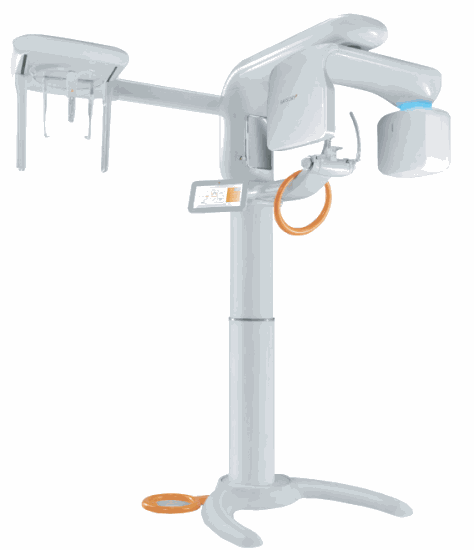
For many basic dental services, 2D X-ray imaging is sufficient. Today’s digital panoramic X-ray machines provide highly detailed images that can be instantly viewed on a computer to view the teeth, jaws and surrounding structures and tissues. Issues like tooth cavities, bone loss and abnormal growths near the roots can typically be diagnosed with 2D imaging.
However, for most complicated dental issues, a 3D image can assist with proper diagnosis. For these reasons, more and more dentists are using dental cone beam computed tomography (CBCT) in their practices. Use this guide to choose the right cone beam 3D imaging machine for your patients’ needs.
What Is a Cone Beam Machine?
Dental cone beam CT is a type of X-ray technology that creates three-dimensional images of the teeth and the bones and soft tissues around them. The name stems from the cone shape of the X-ray beam used to capture the images, which are then assembled into a 3D picture using computer software. This provides more detailed information than a traditional 2D X-ray, and in many cases can provide a more expanded view of facial structures and sinuses.
Cone beam machines are used in a wide variety of dental specialties, including orthodontics. Some of the most common procedures and issues that can benefit from the use of dental cone beam CT include:
Extractions
Root canals
Dental implants
TMJ disorders
Jaw tumors
Sleep apnea
Sinus problems
Reconstructive surgery
Features of Cone Beam 3D Imaging Machines
The best cone beam for dentistry practices depends on several factors, including the most common patient issues and the capabilities and training of the staff. Dentists who need both 2D and 3D imaging can opt for a hybrid panoramic/cone beam system. Others have a dedicated 3D cone beam imaging system due to the type of specialized work they focus on.
When choosing any dental X-ray machine with 3D imaging, it’s important to consider what features you need, such as:
Field of view: The best dental CBCT machine have adjustable FOV to accommodate different dental applications.
Cephalometry: Determine whether you need the option to capture cephalometric images.
Scan time: The quicker images can be captured, the better.
Software: Choose a model with easy-to-learn, easy-to-use software.
Machine size: Consider how much space you have available for the machine and whether the model’s footprint suits your practice.
Accessibility: Some models are made to be wheelchair accessible.
How Much Does a CBCT Machine Cost?
When putting together a dental 3D imaging comparison for select models, one of the determining factors will be the price. Sticking to a budget is important for any dental practice, especially with such a big investment. A dental CBCT machine usually costs upwards of $40,000, with high-end models priced closer to $100,000 or more. While the upfront cost is significant, that can often be offset by the added services a practice can offer as a result of adding this new machine. Many dental practices may include upgrading to a 3D imaging system as part of an expansion or to attract customers who may have otherwise visited another practice for specialty services like extractions, root canals or implants.
If you’re concerned about cost, include used models in your CBCT comparison. If you choose a certified pre-owned cone beat CT system, it will look and perform like new at a fraction of the cost of new digital imaging equipment.
Cone Beam 3D Imaging for Dentists Buying Guide